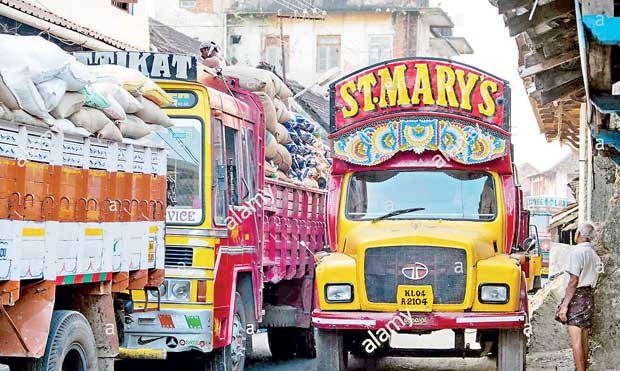Reply To:
Name - Reply Comment
Last Updated : 2024-04-26 08:55:00

 Low-income countries are often advised to prioritize investment in their trade infrastructure to better connect to international markets, and garner the benefits of a more open trade regime.
Low-income countries are often advised to prioritize investment in their trade infrastructure to better connect to international markets, and garner the benefits of a more open trade regime.
The World Bank’s Trade Facilitation Support Programme and the World Trade Organization (WTO)’s Trade Facilitation Agreement, for example, promote investment in trade infrastructure to boost development prospects by improving competitiveness and lowering trade costs.
In a recent ADB Institute working paper, I posed the question of whether too much emphasis may have been placed in recent years on international trade infrastructure such as ports, customs, and international logistics that reduce international trade costs to the detriment of domestic infrastructure—internal roads and bridges that may reduce domestic trade costs.
Much of the empirical research shows that investment in trade infrastructure has a strong and positive impact on trade flows, and there is also a consensus that trade is an engine for economic growth. So, investment in trade infrastructure seems like a step in the right direction.
However, as anyone who has experienced rush hour traffic in an Asian megacity recently would know, the main infrastructure development challenges facing developing countries are not necessarily found at the border. Investment in domestic infrastructure is often lagging investment in trade infrastructure. This mismatch can hurt a country’s development prospects by undermining its potential to develop domestic as well as international trade.
Building on a location model developed by Martin and Rogers and using a new dataset on trade costs made available by Arvis et al., I demonstrate that in countries where domestic physical infrastructure is worse than the trade infrastructure, the additional dollar should be invested in domestic infrastructure before further investments are made in international infrastructure.
More specifically, in countries with relatively poor domestic infrastructure, I found that a 1 percent increase in the ratio of domestic to international trade costs—which can be achieved by curbing international trade costs by 1 percent—leads to 0.44 percent reduction in GDP per capita. In countries with relatively good domestic infrastructure, the same investment in international trade costs leads to a 0.33 percent increase in GDP per capita.
Benefits from open trade not equal for all
Openness to international trade has, on average, had a positive impact on economic growth. But not all countries have benefited to the same degree. While investments in international trade facilitation no doubt lead to more trade, they can also result in a reallocation of investors away from countries with relatively poor domestic infrastructure.
The logic is straightforward. Firms deciding where to locate their production will choose countries with better domestic infrastructure, as it will be cheaper to produce goods and services there. Improved international trade infrastructure magnifies the opportunities for industrial relocation of firms to countries with decent domestic infrastructure.
This suggests that international mechanisms such as the WTO’s Trade Facilitation Agreement should make allowances for low-income countries to first develop their domestic infrastructure, so they can maximize the benefits to be had from more open trade.
Of course, there are many unanswered questions. The development impact of investment in national infrastructure as opposed to international trade infrastructure is unlikely to be linear, given that there’s more to development that just economic growth.
Further work should explore this question, as well as the impact of a range of possible trade-offs on investments in infrastructure. These include quality versus quantity, maintenance versus new infrastructure, financing with user fees versus subsidies, or universal services versus cost efficiency. The answers to these questions are likely to depend on the country, its development objectives, and the type of investment.
(Marcelo is a Professor of Economics at University of Geneva. He is also Scientific Advisor at CEPII in Paris, and Research Fellow at both the Centre for Economic Policy Research in London and FERDI in Clermont-Ferrand. He is currently directing a research project on the labor market impacts of trade reforms in developing countries. Prior to joining the University of Geneva, Marcelo worked at the World Bank and the WTO)

Add comment
Comments will be edited (grammar, spelling and slang) and authorized at the discretion of Daily Mirror online. The website also has the right not to publish selected comments.
Reply To:
Name - Reply Comment
US authorities are currently reviewing the manifest of every cargo aboard MV
On March 26, a couple arriving from Thailand was arrested with 88 live animal
According to villagers from Naula-Moragolla out of 105 families 80 can afford
Is the situation in Sri Lanka so grim that locals harbour hope that they coul